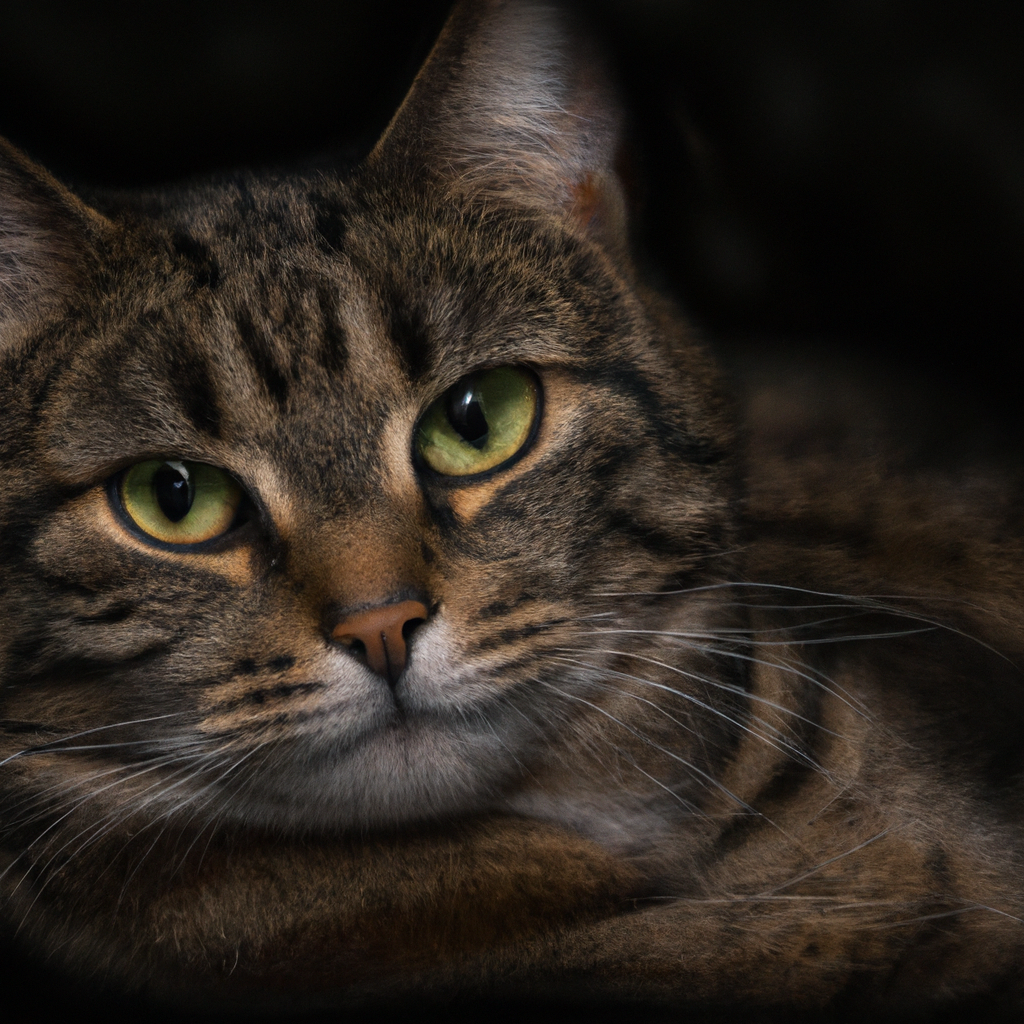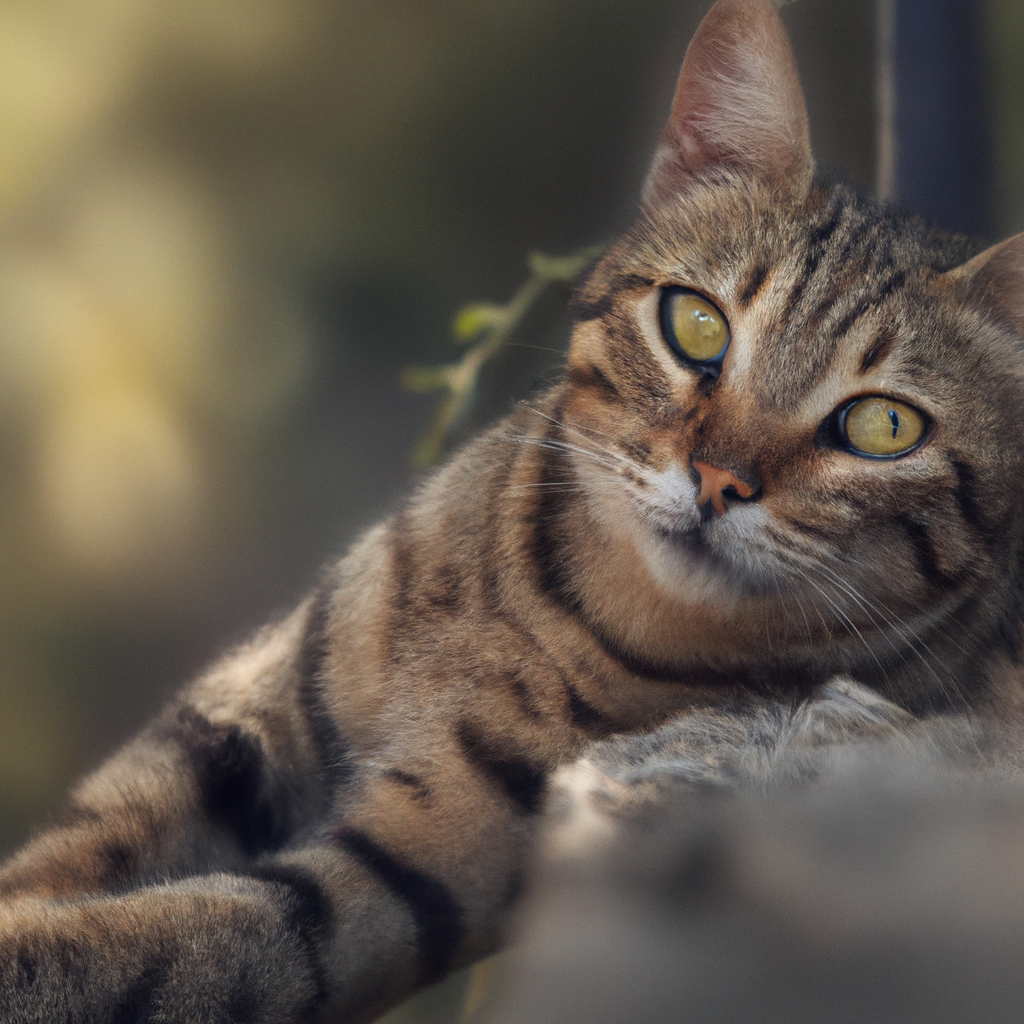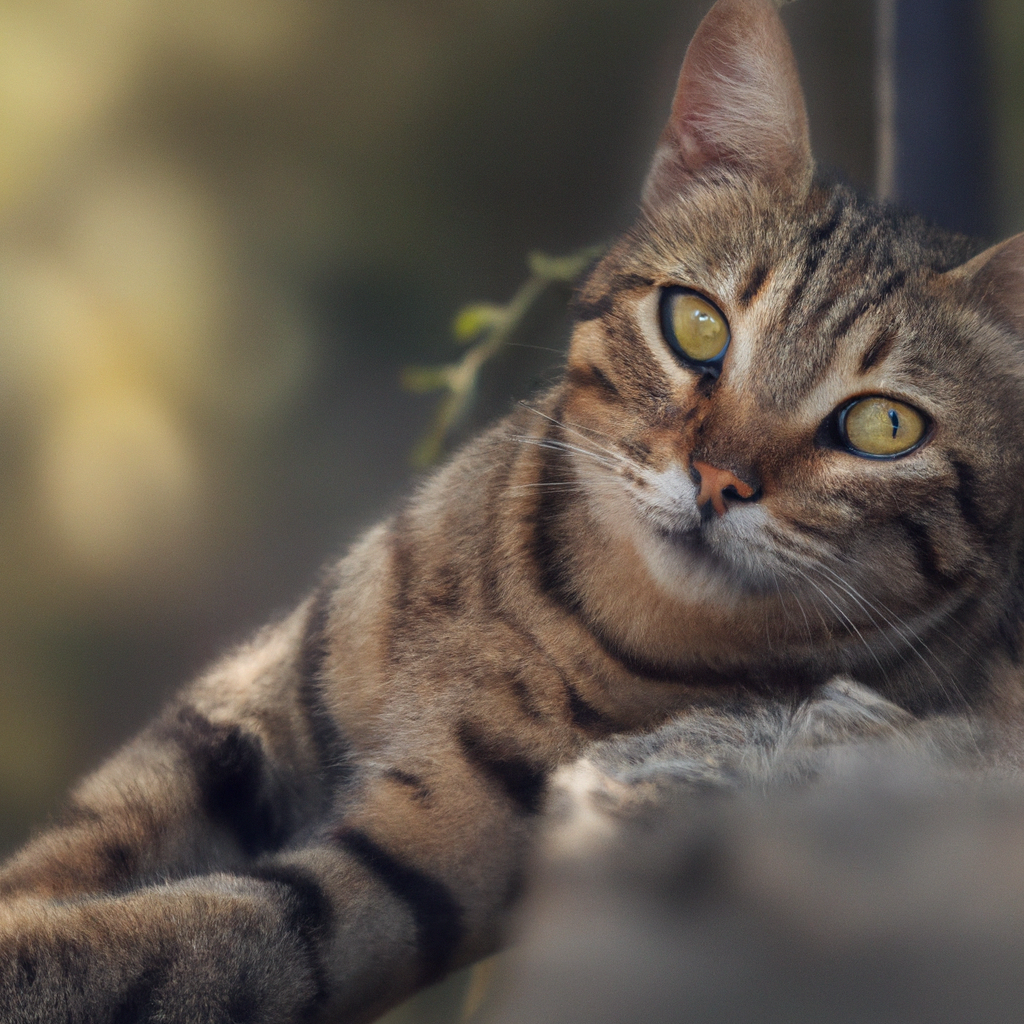Have you ever wondered what exactly a tabby cat is? Well, wonder no more! This article will unravel the mystery behind these adorable feline companions. Whether you’re a cat enthusiast or simply curious about different cat breeds, understanding what makes a tabby cat unique is key. From their distinctive coat patterns to their playful personalities, tabby cats hold a special place in the hearts of cat lovers worldwide. So, let’s delve into the world of tabby cats and explore what sets them apart from other feline companions. A tabby cat is a domestic cat with a distinct coat pattern known as tabby. This pattern is characterized by dark stripes, swirls, or spots on a background of lighter fur. Tabby cats can come in various colors, and their body structure can vary as well. In this article, we will explore the physical characteristics, personality traits, history, breeds, care, and symbolism of tabby cats, as well as debunking some common myths and superstitions surrounding them.
Physical Characteristics of a Tabby Cat
Coat Patterns
One of the defining features of a tabby cat is its unique coat pattern. Tabby cats can have several different coat patterns, including classic, mackerel, spotted, and ticked. The classic tabby pattern consists of bold swirls or marbled patterns on the cat’s sides, back, and tail. Mackerel tabbies have thin, vertical stripes resembling fishbones. Spotted tabbies exhibit spots or broken lines on their fur, while ticked tabbies have fur with an agouti appearance.
Colors
Tabby cats come in a wide range of colors. The most common colors seen in tabbies include brown, gray, black, and cream. However, they can also be found in less common colors such as red, silver, and blue. Some tabby cats may also exhibit a tortoiseshell pattern, which combines tabby stripes with patches of different colors.
Body Structure
In terms of body structure, tabby cats come in all shapes and sizes. They can range from small and slender to large and muscular. Their body type may also depend on their breed lineage. Some tabby cats may have a more stocky build, while others may be sleek and agile.
Personality Traits of Tabby Cats
Playfulness
Tabby cats are generally known for their playful nature. They love engaging in interactive play with toys, chasing after objects, and even playing hide-and-seek with their human companions. Their playful disposition can provide endless entertainment and joy to their owners.
Affectionate Nature
Tabby cats are often very affectionate and enjoy spending time with their human family. They are known to seek out physical contact, such as cuddling and rubbing against their owners. Their affectionate nature makes them wonderful companions and lap cats.
Intelligence
Tabby cats are known to be intelligent and quick learners. They can easily pick up new tricks and commands, making them a joy to train. Their intelligence also makes them excellent problem-solvers and can contribute to their playful and mischievous behavior.
Independence
While tabby cats tend to bond strongly with their human companions, they also value their independence. They are capable of entertaining themselves and do not require constant attention. This independence can make them suitable pets for individuals who have busy lifestyles.
Socialization
Tabby cats are generally social and enjoy the company of humans and other pets. They adapt well to different social environments and can be great companions in multi-pet households. Proper socialization from a young age helps them develop friendly and sociable behaviors.

Differentiating Tabby Cats from Other Breeds
Comparison with Siamese Cats
Tabby cats and Siamese cats are two distinct breeds with different physical and genetic attributes. Siamese cats have a slender build, deep blue almond-shaped eyes, and a short coat, whereas tabby cats have a more diverse body structure, eye colors, and coat lengths. Siamese cats are known for their distinct color points, which contrast with their lighter bodies, while tabby cats have a variety of coat patterns regardless of their base color.
Comparison with Persian Cats
Persian cats and tabby cats are also quite different in terms of their physical characteristics. Persian cats have long, luxurious coats, a round face with a short nose, and a stocky body. Tabby cats, on the other hand, come in various coat lengths, have a more angular facial structure, and a body that can range from slim to muscular. However, it’s worth noting that there are Persian cats with tabby coat patterns, known as tabby Persians.
Comparison with Maine Coon Cats
Maine Coon cats and tabby cats can have some similarities in terms of coat patterns, as Maine Coons can also exhibit tabby markings. However, Maine Coon cats are generally larger and more robust than most tabby cats. They have a sturdy build, tufted ears, and a bushy tail. Tabby cats, regardless of their breed, can have different body structures and proportions.
Comparison with Bengal Cats
Bengal cats and tabby cats may share a similar spotted or marbled coat pattern, as both can have tabby markings. However, Bengal cats are a distinct breed known for their striking resemblance to wild leopard cats. They have a sleek and muscular body, a glittering coat, and often exhibit more prominent markings compared to most tabby cats.
History and Evolution of Tabby Cats
Origins of Tabby Cats
The origin of tabby cats can be traced back to the early days of domestication of wild cats. Historically, the tabby pattern was believed to have originated from wild African and European wildcat ancestors. Over time, selective breeding and genetic mutations have resulted in the variety of coat patterns and colors seen in modern tabby cats.
Evolution of Tabby Cats
Tabby cats, along with other domestic cat breeds, have evolved alongside human civilizations. They have adapted to various environments and developed distinct characteristics. Through centuries of selective breeding and natural selection, tabby cats have become a common and beloved companion animal in households worldwide.
Tabby Cats in Ancient History
Tabby cats have been depicted in ancient artworks and manuscripts, dating back thousands of years. In ancient Egypt, tabby cats were highly regarded and often worshipped, as they were believed to bring good fortune and protect against evil spirits. These cats were even buried alongside their owners, showcasing the high esteem they held in ancient civilizations.

Popularity and Breeds of Tabby Cats
Popular Tabby Cat Breeds
While tabby is a coat pattern rather than a specific breed, some cat breeds are more commonly associated with tabby markings. Some popular tabby cat breeds include Maine Coon, American Shorthair, Bengal, and Abyssinian. Each breed can exhibit different coat patterns and have unique personality traits.
Breed Characteristics
Maine Coon tabbies are known for their large size, gentle temperament, and luxurious fur. American Shorthair tabbies are celebrated for their versatility, friendly nature, and robust body structure. Bengal tabbies have a wild appearance, striking coat markings, and an active and playful personality. Abyssinian tabbies, on the other hand, are known for their slender build, ticked coat, and high-energy nature.
Care and Nutrition for Tabby Cats
Feeding Requirements
Tabby cats, like all domestic cats, require a balanced and nutritious diet to thrive. High-quality commercial cat food that meets their specific life stage and nutritional needs is essential. It is recommended to consult with a veterinarian to determine the appropriate feeding plan based on the cat’s age, activity level, and any specific dietary requirements.
Grooming Needs
The grooming needs of tabby cats vary depending on their coat length. Short-haired tabbies generally require less grooming and may benefit from regular brushing to remove loose hair. Long-haired tabbies, such as Maine Coons, may require more frequent brushing to prevent matting and to keep their coat in good condition. Regular nail trims, dental care, and ear cleaning should also be a part of their grooming routine.
Exercise and Playtime
Tabby cats, like all cats, require regular exercise to maintain a healthy weight and stimulate their minds. Interactive play sessions with toys that encourage physical activity and mental stimulation should be provided daily. Providing cat trees, scratching posts, and safe outdoor access can also help fulfill their need for physical and mental stimulation.
Common Health Issues
Tabby cats, like other breeds, can be prone to certain health issues. Some common health issues that tabby cats may experience include obesity, dental problems, urinary tract infections, and certain genetic conditions. Regular veterinary check-ups, a balanced diet, and attention to dental hygiene can help prevent and address these health issues.
Veterinary Care
Regular veterinary care is essential for the well-being of tabby cats. Annual vaccinations, parasite prevention, and routine check-ups are vital to ensure their health and catch any potential health issues early. Spaying or neutering is also recommended unless the cat is intended for breeding purposes. Consulting with a veterinarian about proper preventative care and addressing any health concerns is crucial.
Tabby Cats as Popular Symbols
Tabby Cats in Art and Literature
Tabby cats have been frequent subjects in art and literature throughout history. From ancient Egyptian hieroglyphics to Renaissance paintings, tabby cats have been depicted in various mediums, symbolizing different aspects such as grace, mystery, and domesticity. They have been featured in famous literary works like Edgar Allan Poe’s “The Black Cat” and T.S. Eliot’s “Old Possum’s Book of Practical Cats.”
Tabby Cats in Pop Culture
Tabby cats have also made their way into popular culture. From iconic animated characters like Garfield and Puss in Boots to the Cheshire Cat from Lewis Carroll’s “Alice’s Adventures in Wonderland,” tabby cats have captured the imaginations of people around the world. Their distinct appearance and charming personality traits have made them adored figures in cartoons, movies, and commercials.
Famous Tabby Cats
Throughout history, certain tabby cats have gained fame and left a lasting legacy. One famous tabby cat is Trim, the loyal shipmate and pet of Captain Matthew Flinders, an explorer who circumnavigated Australia. Trim has been celebrated in poetry and has even had statues erected in his honor. Other famous tabby cats include Morris, the beloved mascot of the cat food brand, and Bob, who captured the hearts of many with his heartwarming story of companionship.
Role of Tabby Cats in Human Lives
Companionship and Emotional Support
Tabby cats, like all cats, provide companionship and emotional support to their owners. Their affectionate nature and ability to sense their owner’s emotions can provide a sense of comfort and security. Many tabby cats become beloved family members, offering unconditional love and friendship.
Therapy Cats
Tabby cats can also play a crucial role as therapy animals. Their calming presence and the positive interactions they provide can benefit individuals with physical or mental health challenges. Therapy cats visit hospitals, nursing homes, and schools, bringing joy and comfort to those in need.
Working Cats
In certain settings, tabby cats can serve as working cats. Barn cats, for example, are employed to control rodent populations in agricultural environments. Their hunting instincts and independent nature make them effective pest controllers, ensuring the safety and cleanliness of their surroundings.
Tabby Cats as Pest Controllers
Tabby cats, with their hunting skills, can help control pest populations in domestic environments as well. They are natural predators and often excel at catching mice and other small pests. This innate ability makes them valuable in households seeking a natural and environmentally friendly approach to pest control.
Myths and Superstitions about Tabby Cats
Black Tabby Cat Superstitions
Black tabby cats, also known as black cats, have been associated with several superstitions throughout history. In some cultures, black tabbies are considered harbingers of bad luck or are associated with witchcraft. However, it is important to note that these superstitions are not based on facts and that black tabby cats, like all tabbies, make wonderful companions.
Tabby Cats and Witchcraft
Tabby cats, especially black tabbies, have been linked to witchcraft in various folklores and superstitions. This association likely stems from the historical persecution of individuals, often women, practicing herbal medicine or living unconventional lifestyles. It is essential to separate these unfounded beliefs from the reality of tabby cats’ true nature and the positive role they play in human lives.
Tabby Cats in Folklore and Mythology
Tabby cats feature in numerous folklores and mythologies worldwide, often representing different cultural beliefs and legends. In some folklore, tabby cats are seen as guardian spirits or protectors of households. They are associated with traits like wisdom, luck, or even shape-shifting abilities. These stories add to the rich tapestry of tabby cat symbolism throughout history.
Conclusion
Tabby cats are cherished companions, known for their unique coat patterns, diverse personalities, and rich symbolism throughout history. Their physical characteristics, including different coat patterns and colors, vary widely. Tabby cats are playful, affectionate, and intelligent, making them ideal pets for many households. They have a long-standing presence in art, literature, and pop culture, and their role as therapy animals and working cats showcases their remarkable versatility. Despite myths and superstitions surrounding them, tabby cats bring joy, companionship, and support to the lives of millions of people worldwide.

